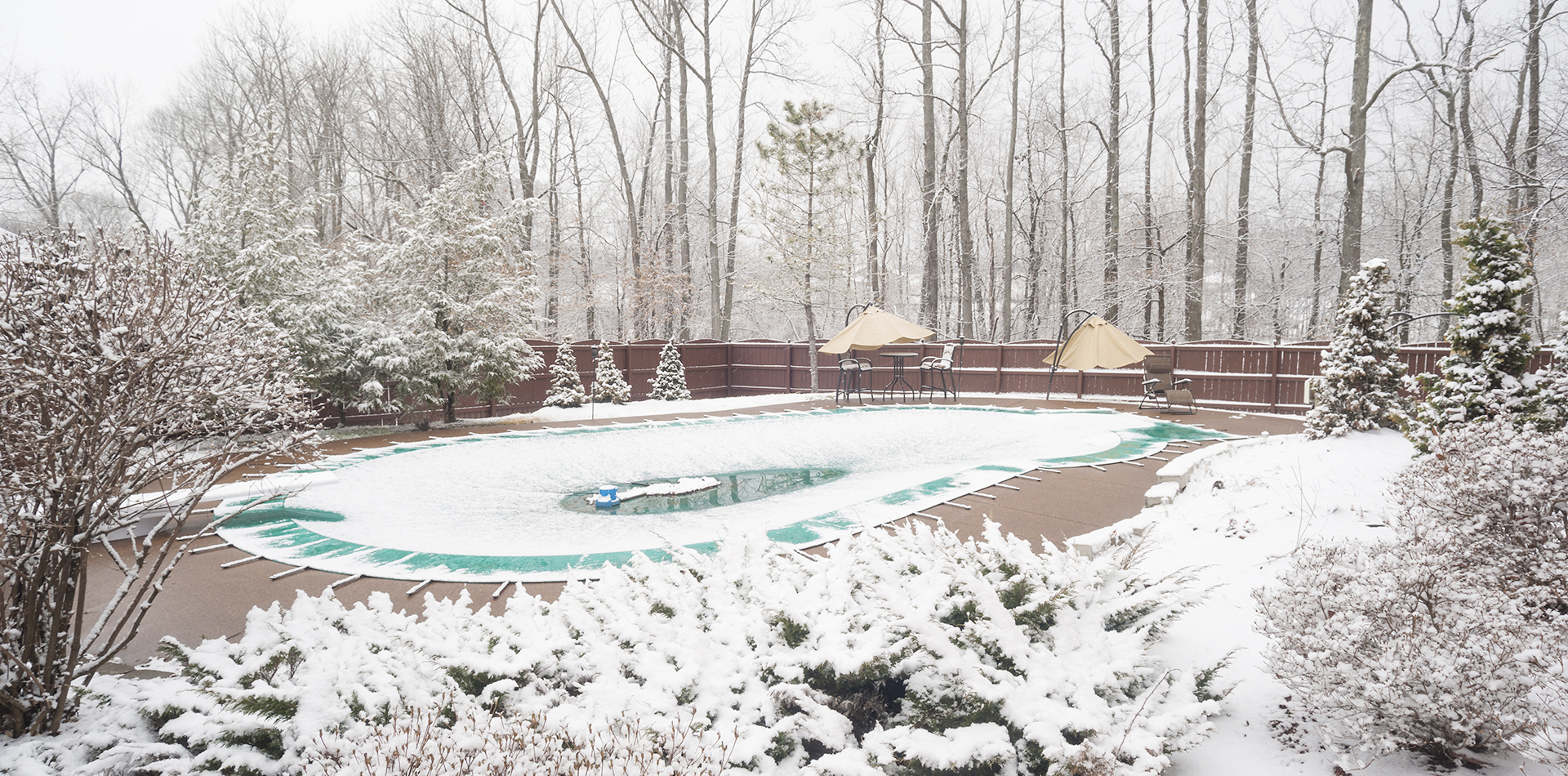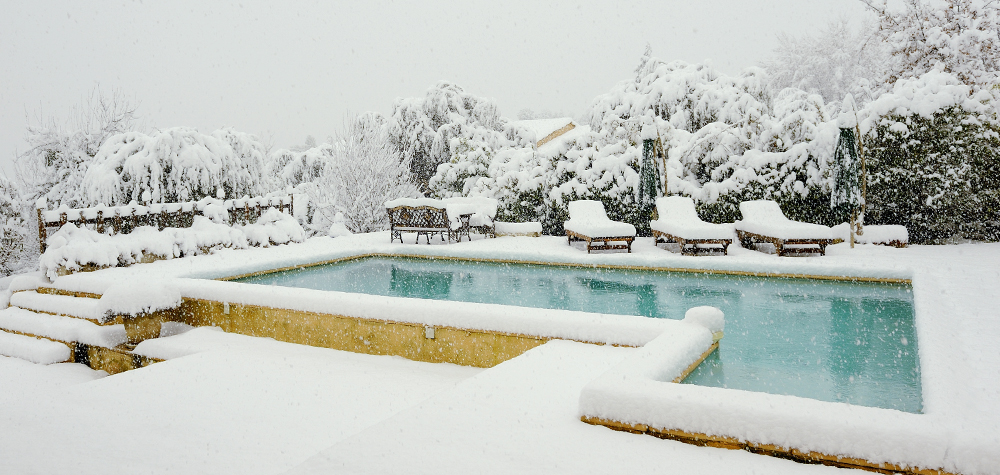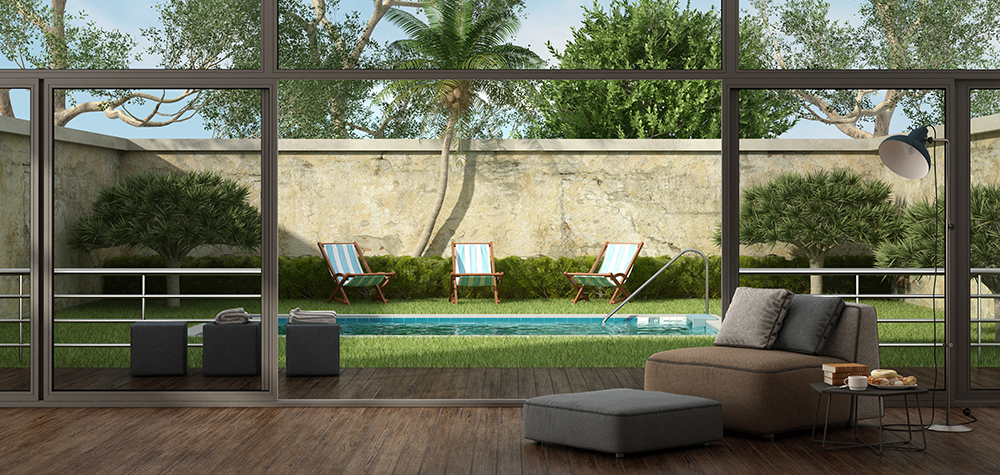
The days are getting shorter and the hot summer sun is fading. The cold suddenly makes us less inclined to laze by the pool.... Yes, that’s right: autumn is here.
And when you have a pool, winterising in autumn is a good rule, because it should ideally be done between the middle and end of October.
The word can make people despair, but it shouldn’t! This is because winterising is a chance to spend less time looking after the pool in winter than in summer.
If you are going to benefit less from your pool, you might as well spend less time looking after it. Winterising offers us this option: it’s practical, isn’t it?
Should you choose active winterising or passive winterising?
There are two main types of winterising:
- Active winterising: if there is no risk of the water freezing, the pool can keep operating in winter, just at a slower speed. You can benefit from the pool’s appearance in the garden, and winterising and returning the pool to operation are relatively easy too. However, the water quality still needs to be monitored and the pool cleaned.

- Passive winterising: full winterising. Network devices are switched off, the water level lowered and the pool is covered with a tarpaulin. This is essential if there is a high chance of water freezing during winter.
Choosing the type of winterising primarily depends on the local weather conditions (whether or not there is a risk of freezing) and the way the pool location is used (how close it is and whether the pool appearance is important).
Active winterising: a pool to suit the weather conditions and to suit you
Active winterising is possible when there is no risk of water freezing. In this case, the hydraulic network of the pool keeps working but at a low speed that is tailored to the seasonal temperatures.
Bacteria multiply much more slowly when it is cold, so it is possible to decrease the filtration system speed and reduce the use of treatment products while still monitoring the water balance over the season.
To make your life easy, a variable speed pump (VS) can be very useful. With the ability to operate the pool 24/7 at low speed, it is ideal for active winterising. It consumes less power than a single-speed pump and takes care of slower but constant water circulation in the network. This movement reduces the risk of freezing and ensures constant filtering and distribution of treatment products.
What’s more, Pentair VS pumps automatically switch on when the temperature drops too low to avoid the water freezing and to protect the pool pipes. This is an important precaution even without an automation system.
In addition to straightforward implementation, another advantage of active winterising is that the visual appearance of the pool does not change and it remains attractive for the whole year. This is a great solution if your pool can be seen from within the house. However, you need to keep removing debris from the water and to regularly check its quality. You can also choose to install a light tarpaulin if you would like to better protect the pool from debris.

The water level is not lowered for active winterising because the risk of freezing is almost nil. The water expands when it freezes and can cause damage by straining plastic parts such as skimmers.
Another installation that is very useful for active winterising is the Soleo water treatment system from Pentair: in addition to automatically monitoring the water quality, this system is fitted with a freeze protection detector that switches on the filtration pump when the temperature is too low. Very practical if your pump doesn’t have one!
However, please note that despite the solutions mentioned above, even circulating water will end up freezing in really cold temperatures. If this is a risk in your region, you have no choice but to opt for passive winterising for your pool.
Passive winterising: prepare your pool to take on all weather conditions
In contrast to the active version that can be adapted, passive winterising generally only comes in one form, which aims to protect the pool from frost damage.
In this case, the filtration pump and all the treatment devices are stopped and you no longer need to manage the treatment products.
The water level is lowered to below the skimmers to prevent the frozen water from straining the intake parts made from plastic, a material that becomes very fragile at low temperatures.
Work is also done in the pool, with the pipes purged and winterising plugs placed in the brush sockets, overflow nozzles and skimmer outlets.
Floaters are placed on the water surface which absorb the pressure from the ice instead of the pool structure. In the case of an infinity pool, floaters can also be placed in the catch basin.
There are several types of winterising tarpaulins for pools, ranging from heavy and almost completely waterproof tarpaulins that are practical for preventing rain and snow from increasing the water level, but bulkier to store in summer, to lighter tarpaulins. The choice typically depends on the location and the weather conditions, so your pool technician can recommend the best solution to you.

We strongly discourage using the automatic shutter of your pool as a cover for winterising. Its plastic slats are very sensitive to cold and can break quickly if they freeze. The shutter should therefore be left rolled up, completely submerged or out of the water depending on the location of its housing.
Finally, in terms of the small things that are easily forgotten, be sure to purge the heat pump! It is redundant in winter but generally very exposed, so there is a high risk of the pump suffering frost damage if water stagnates in it.
If the technical room is exposed to cold, the treatment devices and pipes also need to be purged to prevent frost damage.
Finally, passive winterising is an opportunity to service smaller pieces of equipment such as the cleaning robot: this quiet period for your pool is the ideal time to maintain these devices. Make the most of it!
Winterising your pool: a question of location... and what you want!
The choice between active or passive winterising for your pool should therefore be made according to two criteria:
- Is there a risk of your pool freezing during winter?
- Would you like to be able to completely forget about your pool for several months or to enjoy its appearance in winter?
If there is a high risk of freezing, the choice is clear: opt for passive winterising for your pool to protect the installations, pipes and structure.
If there is almost no risk of frost, opt for active winterising of your pool — the less demanding option — and set it to circulate more slowly during winter. You can still enjoy the visual benefits but the water will need to be kept clean by monitoring the quality and continuing to treat it.
Finally, benefit from these months of the year to service the smallest items of equipment, which is the best way to extend the service life and, in time, to give your wallet a break.
And if you want to make your life easier by automating your active winterising, have a look at our solutions for peace of mind this winter!
Answer comment
I woul dlike to do an active…
I woul dlike to do an active wintering but I can not find the settings for soleo and speedo - can someone send that to me please ? is the freezing protection automatically started at the given temperature (now 3C) or do I need to indicate that this setting should be active - or set up something via speedo? Thanks
Regards Myriam
Answer comment
Hello Myriam, Thank you…
Hello Myriam,
Thank you for your question and trust in our products. Here is the answer to your question from our Product development team:
"The antifreezing will start automatically once the filtration is in auto-mode or timer-mode and the default temperature is set at 3°C.
If an air temperature sensor is connected in addition to the water temperature sensor, the first one will automatically detect a temperature at 3°C which will launch the filtration for an hour. As long as the temperature does not reach out the 3°C, the filtration will keep working on one-hour cycles.
It is important to remember that an active wintering works better in areas where freezing temperature are unlikely (e.g. Southern Europe) but not without risk. In fact, if a freezing period occurs, you can experience power outages that wills top the filtration so you have to stay aware of that fact and keep monitoring the filtration as the freeze will most likely damage some of the pool components."
Thanks,
The Pentair Team